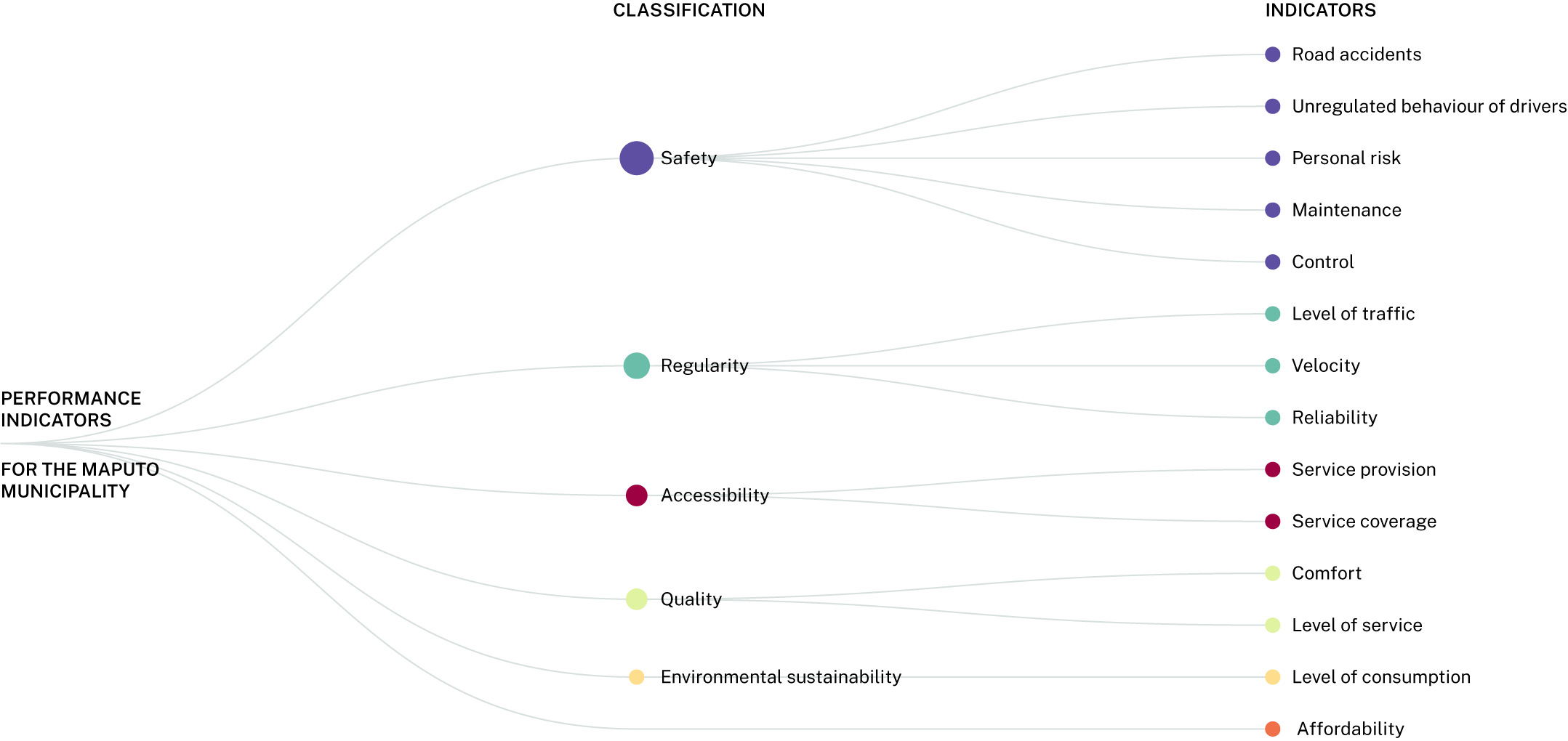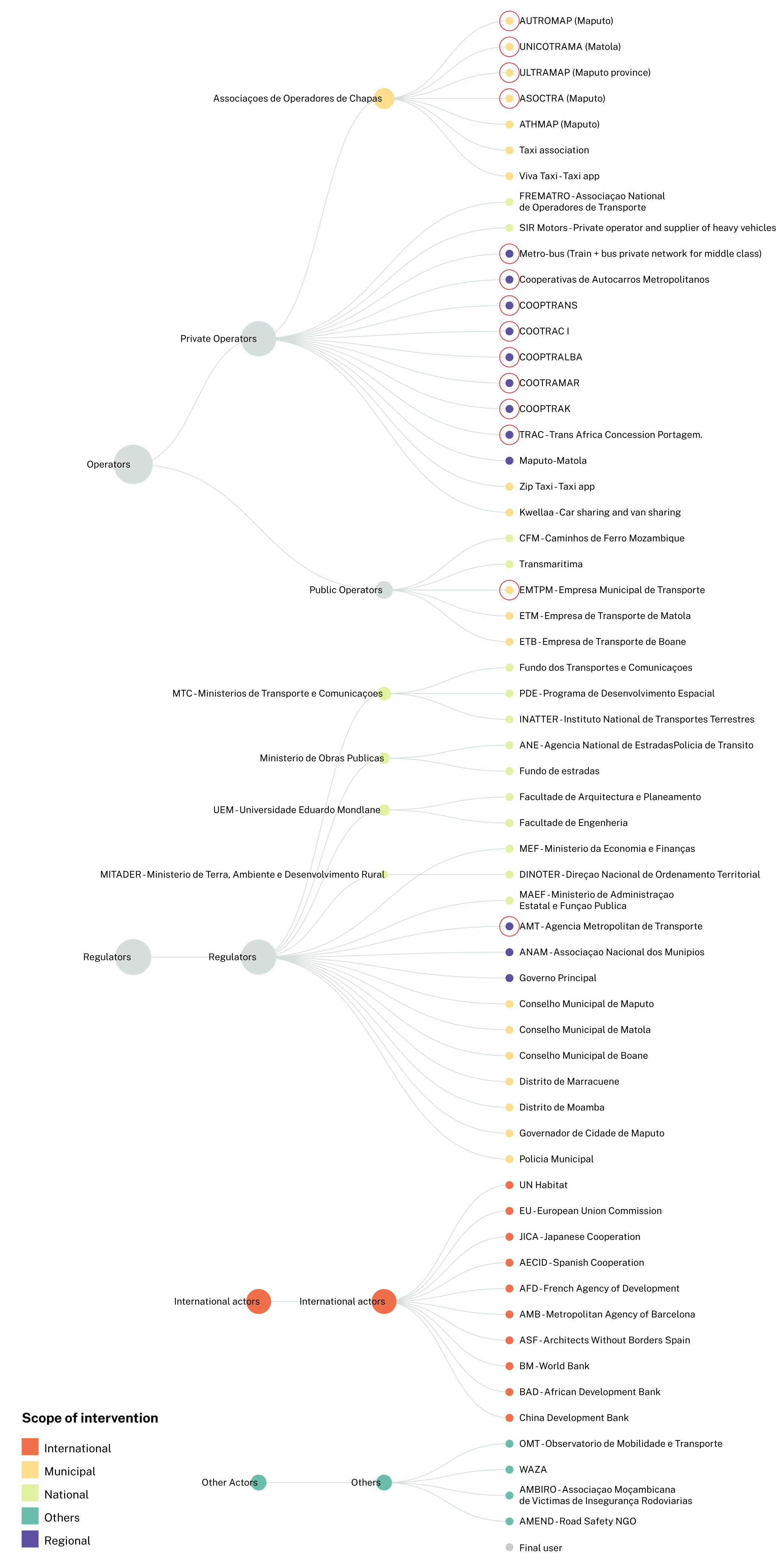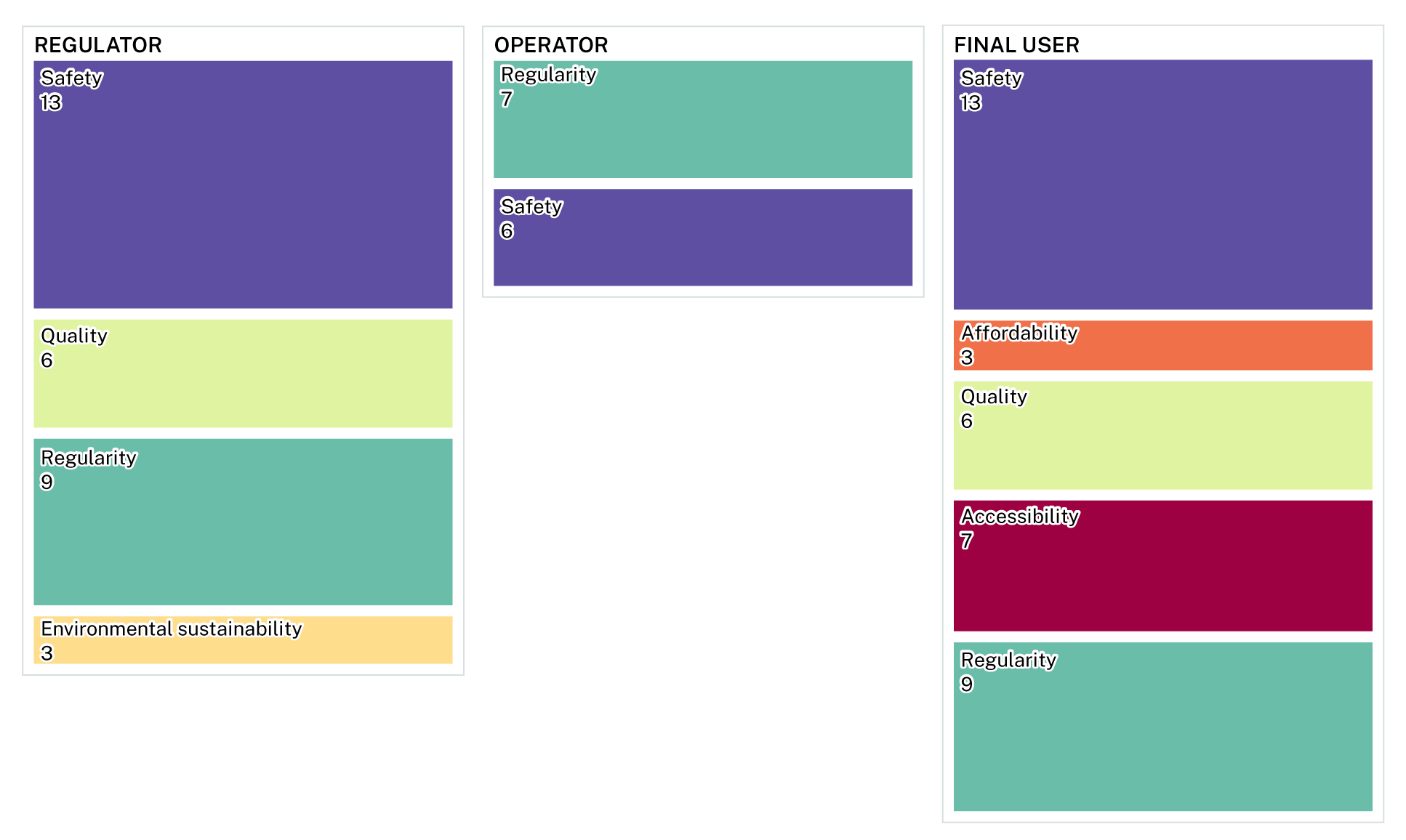Performance Measurement System for Formal and Paratransit Mobility in Sub-Saharan Africa

Association between mobility problem, performance dimension,
performance indicator category and performance indicator.
References available at Table 2. Performance indicators
Designing an efficient mobility system affects not only the transportation service but has also consequences in terms of economic growth and social integration, since efficient transportation service exacerbates poverty and inequality. This motivates the development of this specific study within the Safari project, concerned with the management of transportation systems characterized by both formal and paratransit forms of mobility in the particular context of Sub-Saharan African (SSA) countries, where Maputo (Mozambique) has been selected as pilot case.
Objectives
- Systematize secondary sources on formal and paratransit mobility in SSA
- Identify key stakeholders and their priorities within Maputo’s mobility arena
- Identify key performance dimensions of formal and paratransit mobility in Maputo
Though the development of an efficient mobility system is recognized to impact on poverty and inequality, Safari analyses evidence a gap in previous studies concerning the identification of performance dimensions and indicators for mobility systems which include paratransit. Moreover, evidencing a lack of connection between identification of mobility problems and priorities of the principal actors participating into the mobility arena, this work designs a theoretical framework for performance measurement of formal and paratransit mobility, considering the main issues that characterize transportation systems in SSA countries and relating them to the priorities of different stakeholders.
Activities
Systematization of sources on formal and paratransit mobility
While variegated documentation exists on the evaluation of mobility systems through performance measurement system (PMS) in developed countries, sparse documentation exists on the topic of transportation system in Sub Saharan countries (SSA). Pushed also by local actors, who expressed the necessity to collect all existing material concerned with the study of mobility systems including paratransit transport systems, especially in SSA, one of the first activity conducted by SAFARI has been the systematization of extant documentation, both from academic and practitioner sources. In particular, SAFARI contributed to the systematization of (1) documentation connected to paratransit modes of transport and their characteristics, including main problematics of mobility at SSA level and (2) international, national and local projects concerned with the identification of performance dimensions and measures for mobility systems in SSA. In light of the necessity expressed by academic, practitioners and local actors to collect existing studies of mobility systems in SSA countries, we contribute to the systematization of such documentation by systematically collect secondary sources from academic and practitioner worlds. We integrated these information with primary sources collected along the interaction with local and international key actors in the mobility arena of Maputo. Beside the difficulties in establishing a direct communication with local actors and authorities, the Safari team was able to collect existing projects and materials, contributing to the enrichment of a platform to systematically collect mobility policies and projects.
Identification of key mobility stakeholders
Upon exploration of features of the mobility system in Maputo area, we identified the needs of key stakeholders in formal and paratransit mobility arena. The Safari team conducted a stakeholder analysis integrating the analysis of secondary sources with the primary sources collected through on-the-field analysis to identify the key stakeholders in play in the formal and paratransit mobility arena. Beyond mapping actors involved in the complex mobility system of Maputo, SAFARI team in collaboration with local actors identified needs and priorities of three main categories of stakeholders, namely the regulator, operator and final user.
 → Table 4. Problems in Maputo Map of stakeholders in the mobility arena. Red circles underline key mobility stakeholders in the Maputo city area.
→ Table 4. Problems in Maputo Map of stakeholders in the mobility arena. Red circles underline key mobility stakeholders in the Maputo city area.
Identification of key performance dimensions
Combining the analysis of (1) extant studies and projects dealing with formal and paratransit mobility systems, (2) secondary sources on performance measurement systems and indicators adopted in developed and developing countries to measure and control mobility with specific focus on SSA countries and (3) primary sources collected through an action research methodology in Maputo and thanks to the direct interaction with key actors in the mobility arena in Maputo, Safari developed a theoretical framework for mobility systems in SSA countries. In particular, Skype and Whatsapp communication, participation to online and onsite events, one-to-one interviews, field observations in Maputo supported the adaptation of the framework to the specific needs and priorities of key actors to the specific case of Maputo.
 Figure 1. Stakeholders framework → Table 5. Problems in Maputo
Figure 1. Stakeholders framework → Table 5. Problems in Maputo